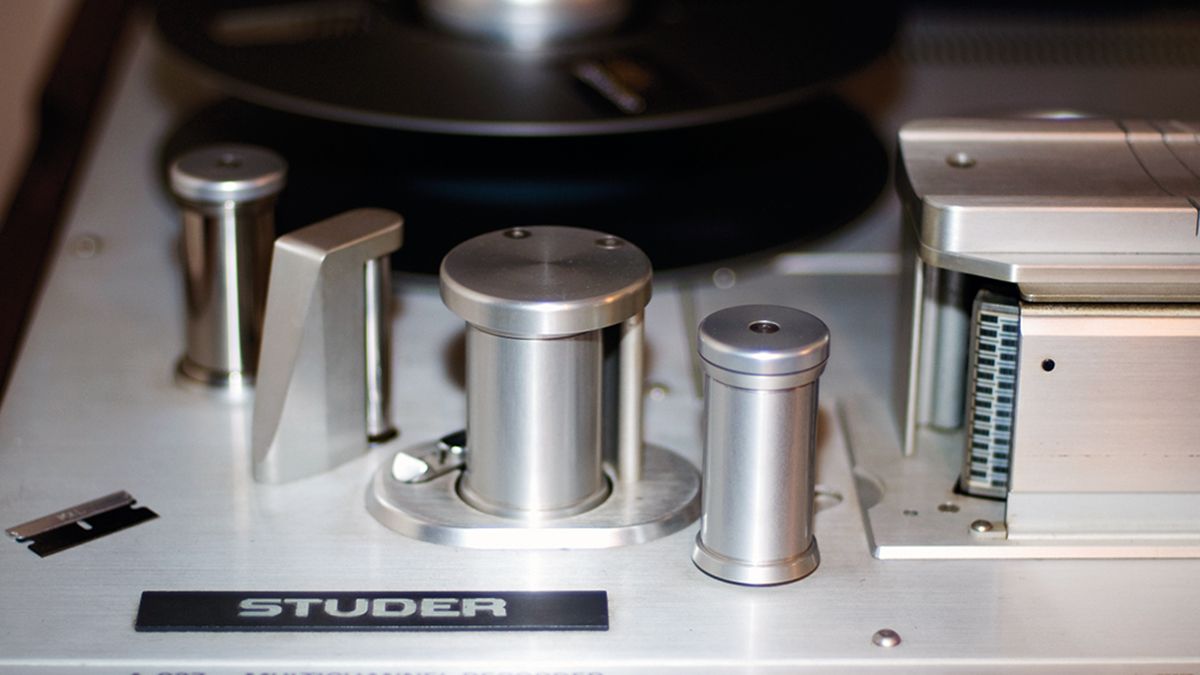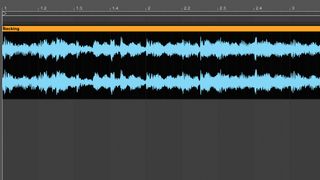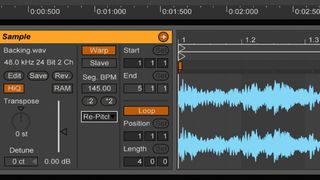How to replicate Beatles-style pitch and varispeed techniques
We all take the effortless manipulation of pitch and time in the modern DAW for granted, but in the tape era, such edits required real skill and care…

In the days before digital cut ’n’ paste, editing recordings involved literally cutting the magnetic tape with scissors or a razor blade at a marked editing point, then rejoining the ends with glue or adhesive leader tape.
Cutting and splicing was used in a wide range of Beatles contexts, most famously on Strawberry Fields Forever, where John Lennon favoured the first part of Take 7 but the latter part of Take 26. The challenge for producer George Martin and engineer Geoff Emerick was to splice the two takes, which, inconveniently, had been recorded at slightly different tempos and were also marginally out in pitch. As luck would have it, speeding up the slower track neatly aligned the keys at the perfect tempo.
Even a crude cut could be used to artistic effect, as with Lennon’s instruction to abort I Want You (She’s So Heavy) at an apparently random point in the instrumental coda, so as to abruptly close Side 1 of Abbey Road. On Side 2, Her Majesty originally sat between Mean Mr Mustard and Polythene Pam, as part of the extended medley. To create better continuity between the two Lennon songs in the same key, McCartney’s ditty was deftly removed and spliced at the end of the side, where it surfaces as an off-the-wall hidden track.
To create better continuity between the two Lennon songs in the same key, McCartney’s ditty was deftly removed and spliced at the end of the side, where it surfaces as an off-the-wall hidden track.
While the disorientating effect of playing tapes backwards pre-dates the Fab Four, the story of John Lennon accidentally discovering it when threading his reel-to-reel player the wrong way when high at home is all part of the legend. However, credit for its creative use in The Beatles’ catalogue should go to George Martin, whose 1966 experiment with John’s vocal on Rain so intrigued the Beatle that “from that moment, he wanted everything backwards”, the producer reminisced.
The same Revolver sessions are a tour de force of tape reversing, including Tomorrow Never Knows, where, along with a backwards sitar loop, George Harrison’s guitar solo - originally bluesy - takes on a mystical Eastern feel when heard in reverse (at 1:08). More intricate is his solo on I’m Only Sleeping
(at 1:32), where, as the story goes, George learned and recorded the part backwards before reversing the tape.
Tape reversing was soon applied to other Beatles instruments, delivering a range of psychedelic textures, such as the eerie ‘whooping’ of backwards cymbals on Strawberry Fields Forever. This was one of the producer’s most captivating effects, which he revisited in various settings, including the Yellow Submarine film.
Nowadays, of course, the digital world is so sophisticated that reversing audio can be done at the click of a mouse, and pitch and tempo often come unlinked as standard for our convenience. But that doesn’t mean we can’t get the characteristics of real tape back into our DAWs to perform these vintage techniques ourselves. Here's how it's done…
Get the MusicRadar Newsletter
Want all the hottest music and gear news, reviews, deals, features and more, direct to your inbox? Sign up here.
For more on emulating The Beatles’ production techniques in software, pick up the August edition of Computer Music.

Step 1: Slowing down a tape machine and recording a new part at the lower pitch, before returning everything back to the original speed, is a classic technique. It’s easy to shift pitch in a DAW, but emulating the old-school method produces tangibly different results. Let's use this technique to process a vocal and keep it in key with the backing track. Load Backing.wav into a 145bpm session.

Step 2: We’re using Ableton Live here, but the same technique will work in any DAW. Ableton has a warp algorithm called Re-Pitch, which stretches or compresses time without preserving pitch. Double-click the clip and change the Warp Mode from Beats to Re-Pitch, then drop the session tempo down to 129bpm and hear how the audio lowers in pitch with it.

Step 3: Load Vocal.wav. This was recorded at the slower tempo and lower pitch. Double-click the vocal clip and change the Warp Mode to Re-Pitch. Now, change the master tempo to the original tempo of 145bpm. The vocals are still in key with the backing but have a different tonal quality. Finally, we’ve thrown in a delay and Abbey Road Reverb Plates for some virtual ambience.
Computer Music magazine is the world’s best selling publication dedicated solely to making great music with your Mac or PC computer. Each issue it brings its lucky readers the best in cutting-edge tutorials, need-to-know, expert software reviews and even all the tools you actually need to make great music today, courtesy of our legendary CM Plugin Suite.

"If I wasn't recording albums every month, multiple albums, and I wasn't playing on everyone's songs, I wouldn't need any of this”: Travis Barker reveals his production tricks and gear in a new studio tour

“My management and agent have always tried to cover my back on the road”: Neil Young just axed premium gig tickets following advice from The Cure’s Robert Smith











